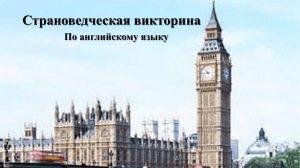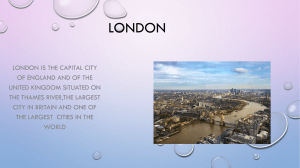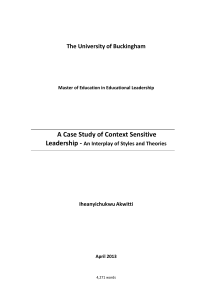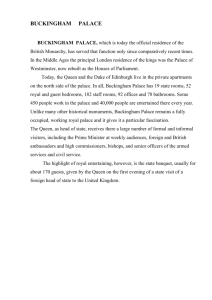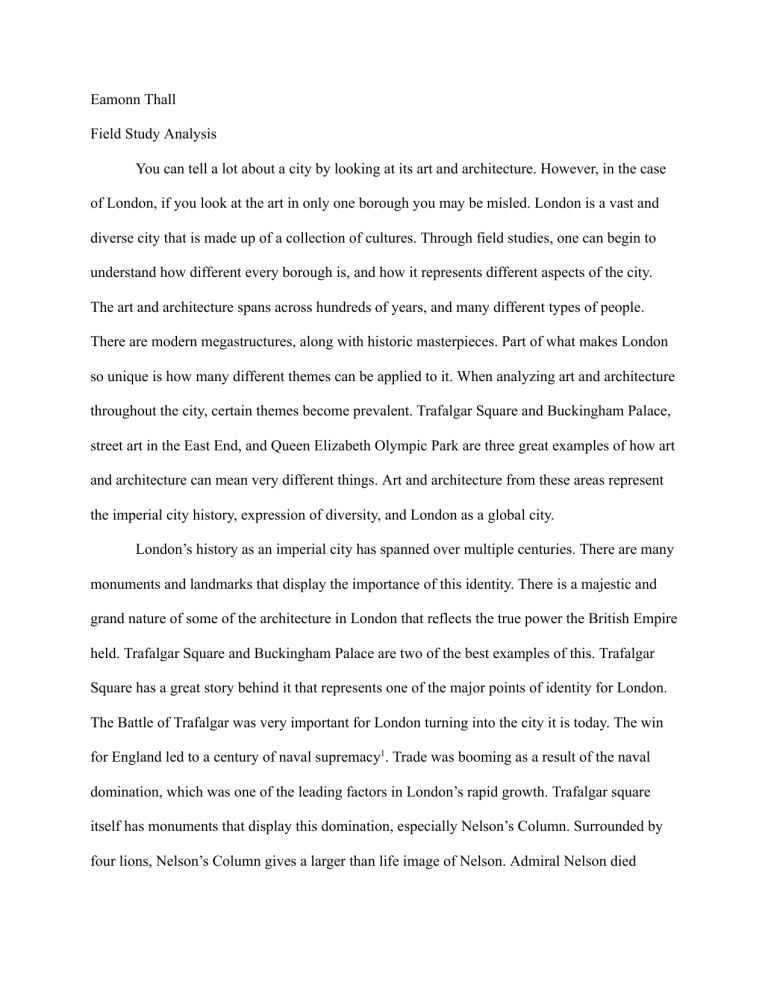
Eamonn Thall Field Study Analysis You can tell a lot about a city by looking at its art and architecture. However, in the case of London, if you look at the art in only one borough you may be misled. London is a vast and diverse city that is made up of a collection of cultures. Through field studies, one can begin to understand how different every borough is, and how it represents different aspects of the city. The art and architecture spans across hundreds of years, and many different types of people. There are modern megastructures, along with historic masterpieces. Part of what makes London so unique is how many different themes can be applied to it. When analyzing art and architecture throughout the city, certain themes become prevalent. Trafalgar Square and Buckingham Palace, street art in the East End, and Queen Elizabeth Olympic Park are three great examples of how art and architecture can mean very different things. Art and architecture from these areas represent the imperial city history, expression of diversity, and London as a global city. London’s history as an imperial city has spanned over multiple centuries. There are many monuments and landmarks that display the importance of this identity. There is a majestic and grand nature of some of the architecture in London that reflects the true power the British Empire held. Trafalgar Square and Buckingham Palace are two of the best examples of this. Trafalgar Square has a great story behind it that represents one of the major points of identity for London. The Battle of Trafalgar was very important for London turning into the city it is today. The win for England led to a century of naval supremacy1. Trade was booming as a result of the naval domination, which was one of the leading factors in London’s rapid growth. Trafalgar square itself has monuments that display this domination, especially Nelson’s Column. Surrounded by four lions, Nelson’s Column gives a larger than life image of Nelson. Admiral Nelson died during the battle of Trafalgar, and the Column commemorates his bravery. It stands 52 meters tall. When you are right under it you can barely even see Nelson, it is truly a spectacle. Even after death he keeps watch over Trafalgar Square and London. This is not the only representation of an important historical figure in the square. King George IV also has a larger than life statue of him on a horse. Both of these figures, along with the lions, give off a sense of power, and show the value London puts on being an imperial city. All the architecture in the square gives the feeling of royalty and importance. Moving on to Buckingham Palace, similar themes arise in even greater capacity. It is almost impossible to do justice to the statue of Queen Victoria with words. The way the sun shimmers off the pure gold statue is amazing. Gold is a color strongly associated with high status and power, which further associates Victoria, and the whole area, as a royalty. Knowing the history of the Kings and Queens who all lived in Buckingham Palace, including Queen Victoria and Queen Elizabeth II, helps to understand its significance2. The monument of Victoria along with the gates and Buckingham Palace itself are all examples of architecture representing the monarchy. Another thing to note is the location of both Buckingham Palace and Trafalgar Square. Only about a 15 minute walk from each other, they are not the only important buildings in the area. The whole area of Westminster has that imprial feeling to it. Trafalgar Square has also been a gathering place for multiple political rallies and protests, “At the very heart of London, Trafalgar Square is surrounded by classic architecture with echoes of the imperial past… it became a place where people congregate to protest, hold rallies and celebrate. Trafalgar Square has seen thousands gather in support of war; thousands come together to demonstrate against it; thousands rioting, sometimes violently, against government policies of one sort or another.”3 The government is major part of an empire, and recognizing the square as a place that supports or opposes it also adds to the imperial significance. It makes sense as there are many important government buildings not far from both Buckingham Palace and Trafalgar Square. Westminster Abbey and St. James’s Palace are two buildings to note that have similar displays of imperial power. The street art in the West End is diverse in itself, while also portraying the diversity of London. You never know what you are going to see on the side of the street. There is a lot of expression through street art. From buildings turning into Gucci suitcases, to STIK creating his iconic stick figures, there are many different types of art and for different reasons. Some have a social commentary. STIK is one of more popular artists whose art has immense meaning behind it. In an interview, he talks about maintaining the diversity of the East End and the effects of gentrification, ““Maybe they’re winning,” he says, allowing his optimism to sag for a moment. “I think there’s space for everyone but I’ve got a feeling they’d rather we weren’t here.” For now, Stik’s doleful, defiant figures are an emblem of resistance, symbolising Londoners who refuse to be rendered invisible. “The attitude I want to get across in my work is: ‘People live here’,” he says. “It’s our city.”4 STIK is a great example of someone who made his living creating art in the East End. He cares deeply about the current issues in the East End, including gentrification, and makes commentary on these issues through his art. The East End has a diverse population, and one of the ways they can connect on common ground is through art5. Art can be seen in a wide variety of languages, like Bengali, Arabic and Chinese, and religions which both show the diversity of expression in the area. Some walls will be covered in stickers of a wide range. You can see some vulgar political promotions, brand promotions, and random cartoon characters that you never thought you would see together. For a lot of people, art is a way to express themselves. They express where they came from, their ideas, and things they feel should be seen. Murals can be seen depicting different aspects of peoples’ cultures. This can include artists portraying religious scenes, or the food and clothing of their culture. For other people, art is a way to make a living to get through difficult times. Having other people pursuing similar goals as you can bridge a culture barrier. Collaborating with different artists can uplift both parties. The East End has seen graffiti and street art as early as 1888, but the major boom came in the late 1990s to 2000s6. Many people moved to the East End to pursue a career in art. It has become such a part of London’s identity that there are even sanctioned pieces by owners of the buildings or the city itself. The diversity of the street art in the East End represents the diversity of London, and how many different types of people all contribute to the atmosphere of London. Queen Elizabeth Olympic Park has gone through changes since it was first built, but has maintained itself as an embodiment of London as a global city. It represents so much about London, including the cultural and social significance of bringing people together on a global scale. It was first built for the 2012 Summer Olympics, but since then it has been transformed into an everyday use public space. It was built by many of the world's most famous architects. You can see the influence of different architects and where they come from. Each building has unique elements, including the ArcelorMittal Orbit, which was built by Sri Lankan architect Sir Anish Kapoor7. This is more of an art piece rather than a venue for the Olympics, but there are many extraordinary buildings that function as venues. Some of the more popular ones include the Velodrome and the Copper Box Arena. The diverse architecture only contributes to London being known for its architectural prowess. London has always attracted people from all around the world, and the Olympics was no exception. The athletes village for the games had flags from all around the world hanging outside. The Olympics brought in people from all around the world who got to experience London and bring their culture with them. The success of the Olympics showed that London could host the biggest sports events in the world. As a result, the park has attracted more huge sporting events, continuing to bring the world to the park, “London became the first city ever to host both the World Para Athletics Championships and IAAF World Championships in the same year with more than 3,300 athletes from more than 200 nations competing in 30 sessions across 20 days.”8 These events have drawn millions of people to the park to attend all of the World Championships. None of that would have been possible if the park wasn’t so great at hosting the 2012 Summer Olympics. The transition away from just holding big sporting events has only helped the park in diversifying how it can be successful. It is now a public space that welcomes everyone from around the world. Outside of major sporting events, there are things like food markets and music festivals that the community can contribute to and represent their culture. The area truly does represent the global aspect of London. People from around the world come to Queen Elizabeth Olympic Park for many reasons. The architectural design, sports, and culture are all aspects of the global city that are very prevalent in the Olympic Park area. The park will continue to grow and take influence from global cultures to epitomize what it means to be a global city. London means many different things to different people. Where you are from can heavily influence how you see the themes and characteristics of London. Art and architecture is one of the major factors that give people their view of London. The art and buildings you see everyday have a heavy influence. Being an imperial city, diversity and expression, and being a global city are some of the more prominent aspects of London. Analyzing Trafalgar Square and Buckingham Palace, street art in the East End, and Queen Elizabeth Olympic Park, helps to discover and understand these aspects. The grandeur and representation of imperial figures shows the importance of how London is an imperial city. The diversity of language, culture, and social commentary of street art in the East End is a perfect representation of the diversity of the East End and London as a whole. Queen Elizabeth Olympic Park’s international events, including massive sporting events and music festivals, attract people from all over the world. The park having an effect on the world and bringing different people together is what makes it exemplify London as a global city. 1. The battle of Trafalgar 1805. Battle of Trafalgar | Royal Navy. (n.d.). Retrieved April 15, 2023, from https://www.royalnavy.mod.uk/news-and-latest-activity/features/trafalgar-day/battle-of-tr afalgar 2. Who lived at Buckingham Palace? Royal Collection Trust. (n.d.). Retrieved April 15, 2023, from https://www.rct.uk/visit/buckingham-palace/who-lived-at-buckingham-palace#/ 3. Mike@bitaboutbritain. (2021, November 9). Exploring Trafalgar Square. A Bit About Britain. Retrieved April 15, 2023, from https://bitaboutbritain.com/history-trafalgar-square/ 4. Guardian News and Media. (2015, August 11). Street artist stik: 'I felt invisible and it was my way of showing I'm here'. The Guardian. Retrieved April 15, 2023, from https://www.theguardian.com/artanddesign/2015/aug/11/street-artist-stik-interview 5. The New East End of London - 2861 words: Research paper example. Free Essays. (n.d.). Retrieved April 15, 2023, from https://ivypanda.com/essays/the-new-east-end-of-london/ 6. Graffiti of the east end. The History Press. (n.d.). Retrieved April 15, 2023, from https://www.thehistorypress.co.uk/articles/graffiti-of-the-east-end/ 7. About: The story: Arcelormittal orbit stratford London. ArcelorMittal Orbit. (2020, August 11). Retrieved April 15, 2023, from https://arcelormittalorbit.com/about/about-the-arcelormittal-orbit/ 8. Worldathletics.org. (2017, December 19). World Athletics: Event Impact Study reveals success of IAAF World Championships london 2017: News. worldathletics.org. Retrieved April 15, 2023, from https://www.worldathletics.org/news/iaaf-news/event-impact-2017-iaaf-world-champions hips
